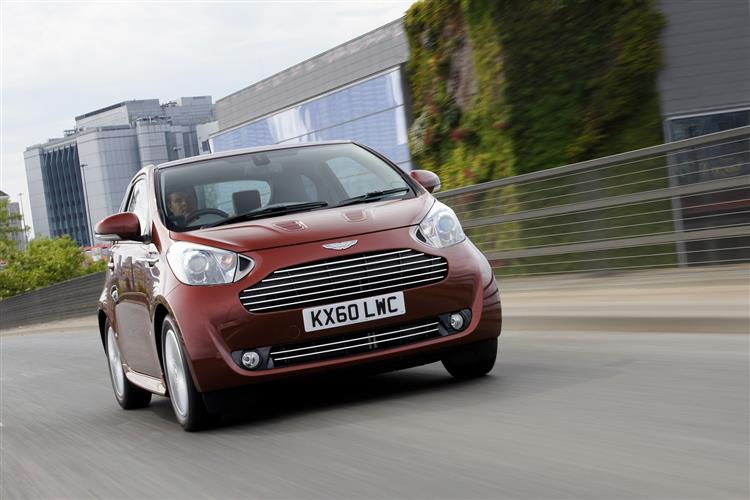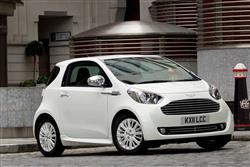This is a sample, showing 30 seconds of each section.
ASTON'S IQ CHECK (some text hidden) SECTIONED_new_AstonMartinCygnet_2011
By Andy Enright
Introductionword count: 153
There are good cars, there are bad cars and sometimes there are just plain puzzling cars. File the Aston Martin Cygnet in the latter drawer. When Aston Martin launched what was clearly a made-over Toyota iQ in 2011, it caused an awful lot of knotted brows, head scratching, chin stroking and all those other things people do when their body language betrays utter cluelessness. Although never officially confirmed by Aston Martin, it was strongly rumoured that the Cygnet was but a cheat, a way of lowering the average carbon dioxide emissions of its vehicle range so as to sidestep some swingeing EU fines. What's not up for debate was that as a sales proposition, the Cygnet was a horrible disaster. Aston expected to sell 4,000 cars a year and struggled to shift 1,500 units over the car's lifetime. If you like the Toyota iQ and want some leather, here's what to look for.
Modelsword count: 6
3dr hatchback (1.33 petrol) [White, Black]
Historyword count: 202
Aston Martin dubbed the Cygnet 'a bespoke luxury commuter car'. Although most of us could appreciate something to brighten up an early morning schlep around the South Circular, if you've got the ability to drop £30,000 on a commuter hack, then a used Audi A8 probably does the job quite a bit better. That was the Cygnet's first problem. The second was that nobody wants to appear a mug and spending three times what a Toyota iQ costs will run the risk of making you appear someone who is easily parted from their money. So it was perhaps understandable that Cygnet sales were slow and not really boosted significantly by launch versions of the car in Black and White special edition guise. “Many of our customers have a need for a small car for urban and city use,” said then-Aston Martin Chief Executive, Dr Ulrich Bez, “The Cygnet brings intelligence, innovation and artistry to the small car market. The Cygnet represents the natural choice for those customers looking for a premium commuter car.” Not many people believed him and after two years of being shunted embarrassingly to the back of Aston Martin dealers everywhere, the Cygnet was finally axed in late 2013.
What You Getword count: 296
The manufacturing process for this car involves first build being completed in Japan before being brought to Gaydon whereupon both interior and exterior are thoroughly revised. One of the benefits of Cygnet ownership is access to the vast palette of paint and materials finishes enjoyed by buyers of more traditional Aston Martin models. This means that it's highly unlikely that two identical Cygnets will ever leave the factory. Hand-finished leather trims, Alcantara trim inserts and aluminium fascia fillets give the Cygnet a respectably upmarket feel. No matter what you think of the politics that have spawned the Cygnet, it's impossible not to be impressed by the integration job Aston Martin has done with the iQ base car. Even the front grille looks cleanly styled. The innovative asymmetric dashboard was designed to open up the whole cabin area. It ensures ample leg room for the front passenger, even when the seat is in its furthest forward position. The sliding seat configuration allows an adult 190cm tall to sit comfortably in the rear seat behind a front passenger of the same height. Shoulder-to-shoulder distance between driver and front passenger bears comparison with a Mondeo-sized vehicle. A flat under-floor fuel tank, a 20% smaller heater unit and repositioned steering gear all make this possible. The all-round space and seating layout means there is ample room for three adults, plus either a child passenger or luggage behind the driver. The rear seats fold flat and there's a storage tray that slides from below the rear seat. Alternatively, you can fold down half of the back seat - or all of it - and increase luggage space from a negligible 32 litres to a small Waitrose shop-sized 242 litres. There's also a storage tray that slides from below the rear seat.
To see the full road test text contact us on 0330 0020 227
Pictures (high res disabled)

.jpg)
|
.jpg)
|
.jpg)
| |||
.jpg)
|
.jpg)
|
.jpg)
| |||
.jpg)
|

|
.jpg)
| |||

|
Scoring (subset of scores)
Category: Small Runabouts
| Performance | |
| Handling | |
| Comfort | |
| Space | |
| Styling, Build, Value, Equipment, Depreciation, Handling, Insurance and Total scores are available with our full data feed. | |



